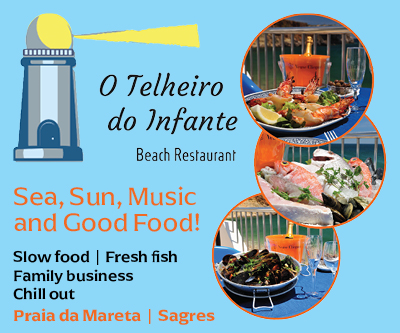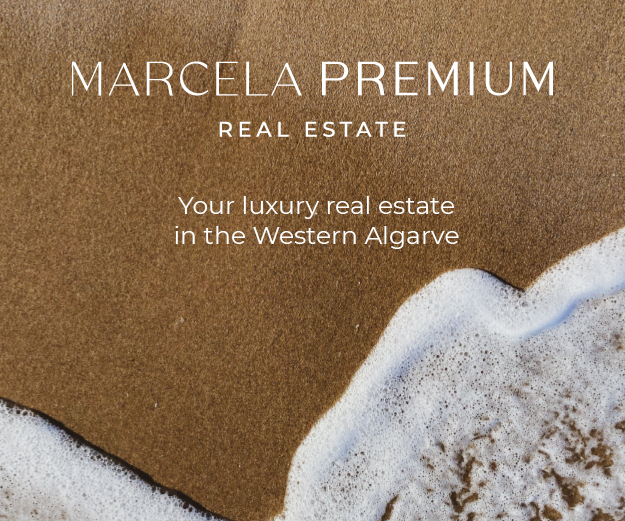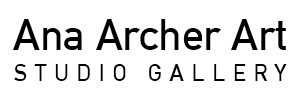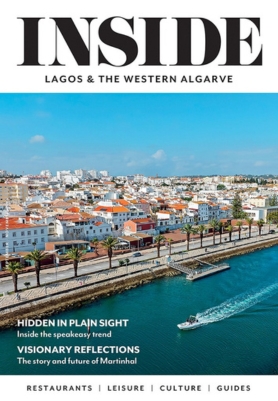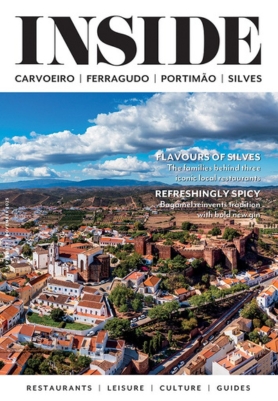The silent storytellers narrating our cities’ past and aspirations for the future
– May 23, 2025 | Text Beatriz Maio
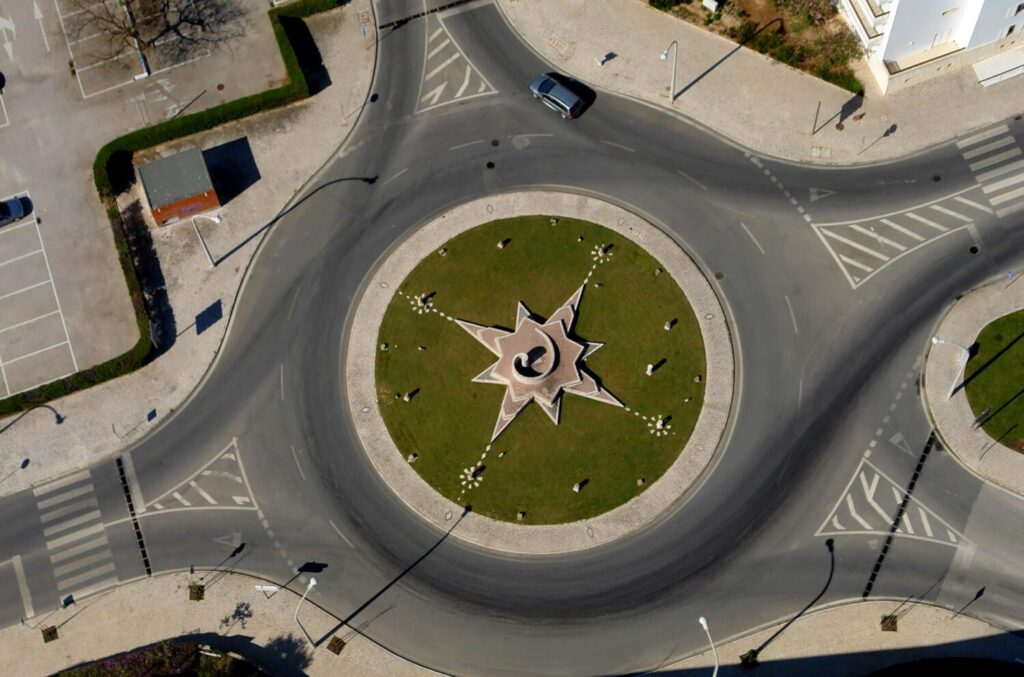
The Algarve is known for its outdoor wonders, from world-famous beaches to stunning nature hiking trails; even art is not confined to just indoor spaces like galleries or museums – it spills into the streets, shaping the landscape in unexpected ways.
Nowhere is this more evident than on the region’s roundabouts, where sculptures and monuments serve as silent storytellers, narrating our cities’ past, their individual identities, and aspirations for the future.
This becomes apparent from the moment you arrive in the Algarve.
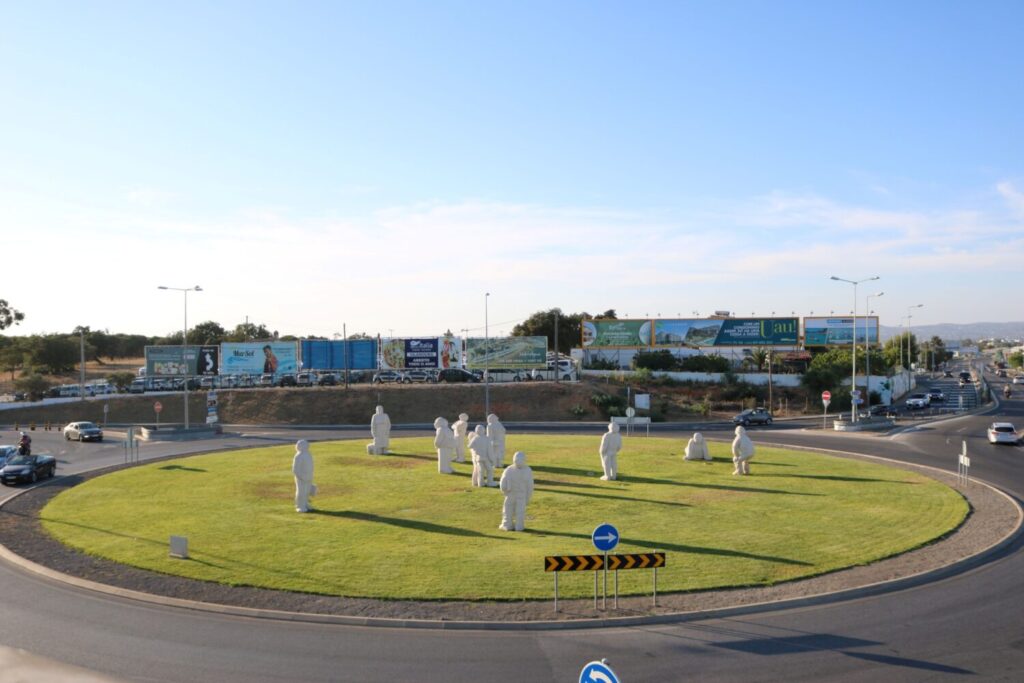
At Faro Airport, a striking group of sculptures admiring the sky, aptly named ‘Os Observadores’ (The Plane-watchers) by artist Teresa Paulino, is a fitting introduction to a region shaped by centuries of travelling and discoveries.
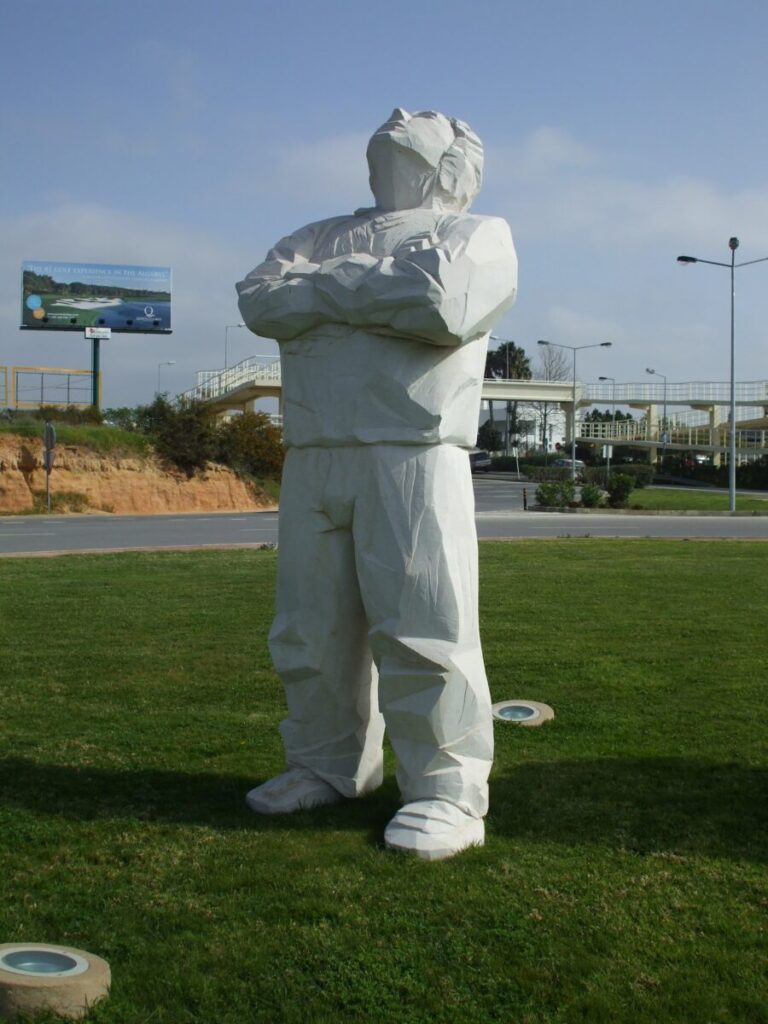
This is often the first point of contact for visitors to the south of the country and represents “observation and contemplation and symbolises the confluence of cultures and the importance of the region as a meeting point for peoples throughout history”, stated André Gomes, president of the Algarve Tourism Board (RTA), pointing out that the roundabout also serves as “the starting or finishing point of the EN2 Route”, Portugal’s very own Route 66.
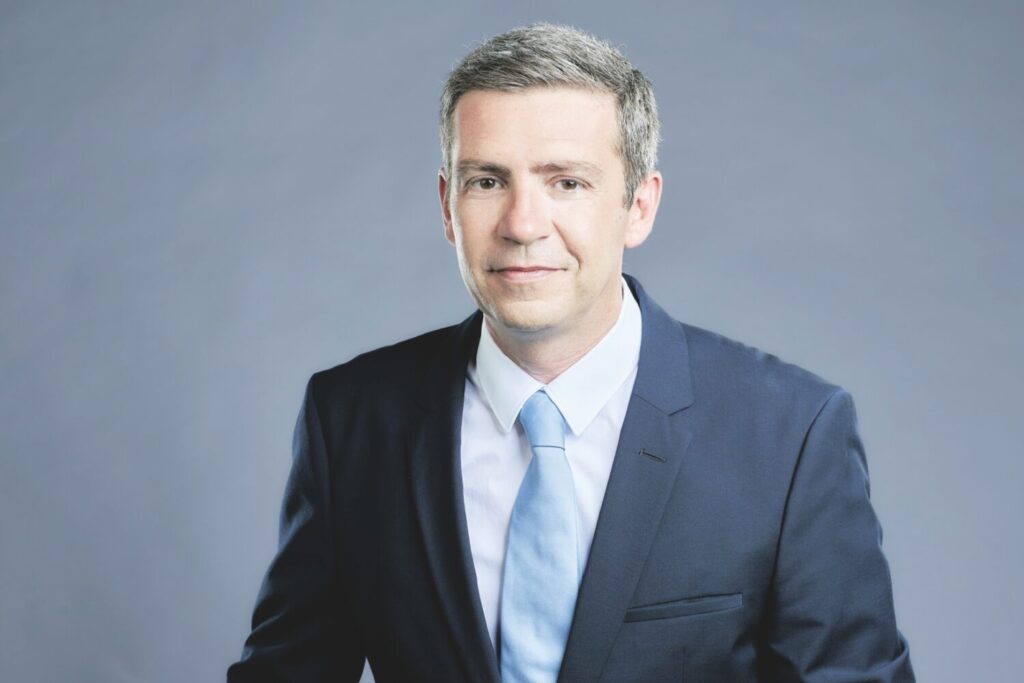
The president of the RTA also highlighted the cultural significance of the region’s roundabouts, stating that by blending “art, culture, and symbolism, they transform public spaces and offer residents and visitors a richer experience”.
This appreciation for public art in urban settings also reinforces a sense of place and authenticity whilst elevating the value of communal spaces for both locals and tourists alike.
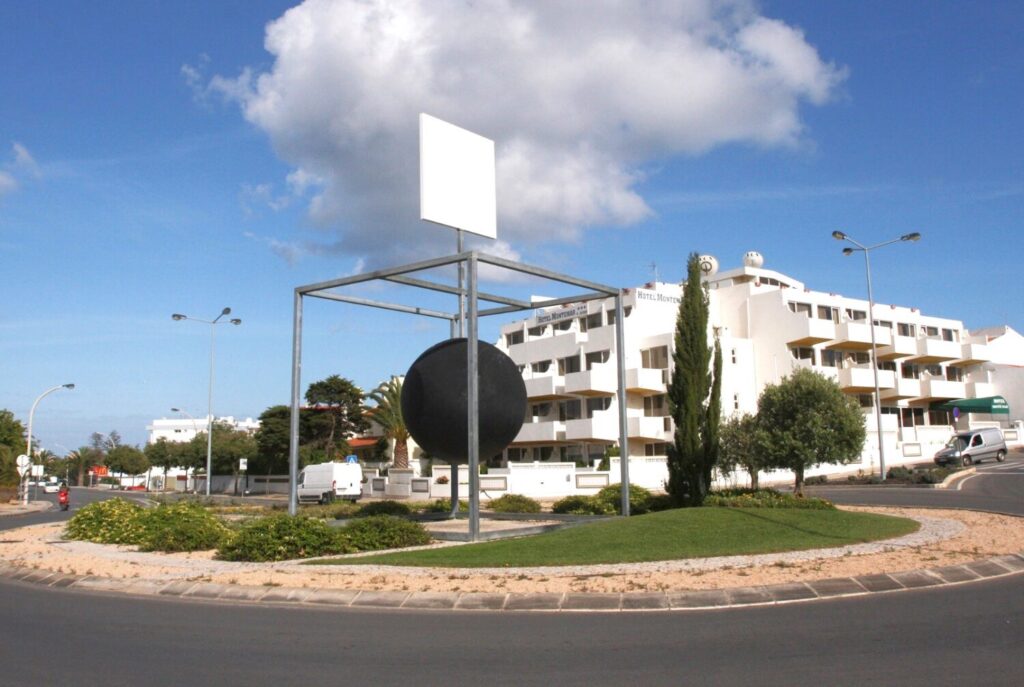
In Lagos, this artistic vision is fully realised. Several roundabouts feature striking sculptures that catch your eye, each with its own artistic narrative.
Along Avenida das Comunidades Portuguesas, Paulo d’Eça Leal’s ‘O Tempo do Homem na Terra’ (Man’s Time on Earth) features a giant sphere that can swing with the wind.

Further along Avenida dos Descobrimentos, Jorge Mealha’s sculpture celebrates Portugal Day, the 10th of June. Meanwhile, Porto Mós houses ‘A Primavera em Lagos’ (Spring in Lagos) by artist José Maria Pereira, which uses different materials such as white marble, stainless steel and moleanos limestone to celebrate the season.
But there are three roundabouts that stand out for their deep connection to the city’s history.
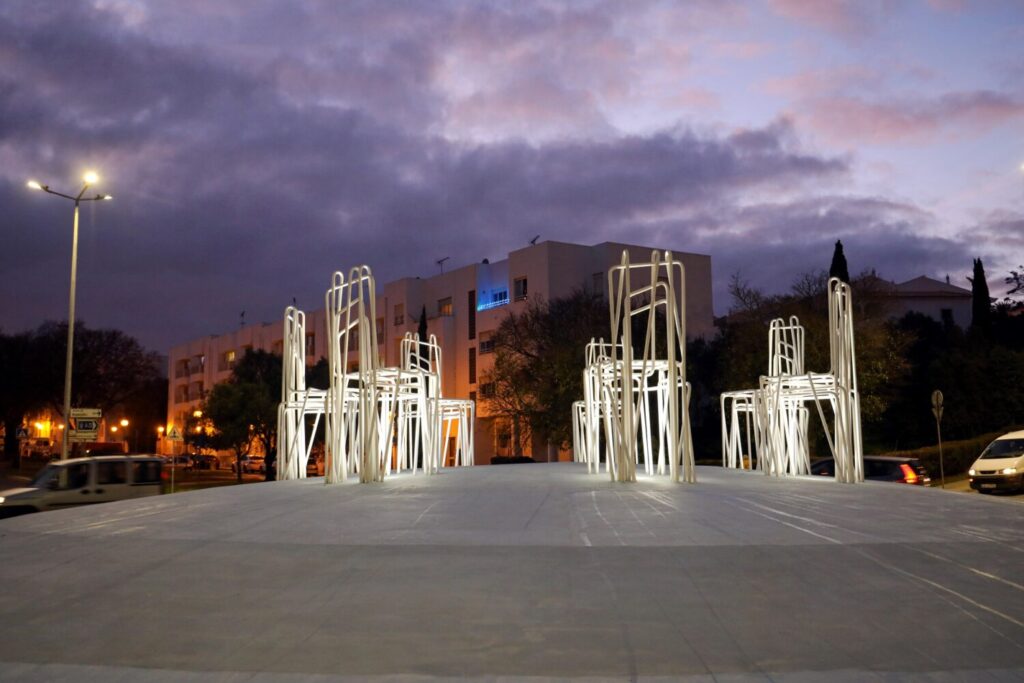
One of the most symbolic is ‘Rotunda das Cadeiras’ (Roundabout with the Chairs), a tribute to the Revolution of April 25, 1974, when Portugal transitioned from the Salazar dictatorship to democracy.
Designed by Vera Gonçalves and inaugurated in 1999, the installation was reinterpreted in 2019 by the same artist. The monument features seven luminous chairs atop a sphere of small blue stones, symbolising three core values: Freedom, Dialogue, and Democracy.
“The circle of chairs is the image of a meeting place; a place for conversation, an exchange of ideas, a place for socialising,” explains the artist. The objects that make up the sculpture were all produced in Lagos, and were chosen with the aim of “making people think”, which is why each chair also alludes to “different paths and voids, which is the challenge of today’s world”, says Vera Gonçalves.
Lagos’ role in the Portuguese maritime discoveries also takes centre stage in the city’s roundabouts. The base for the majority of Portugal’s maritime endeavours, the city served as a naval construction and armament port and was the set off point for almost every caravel at the height of the Discoveries period.
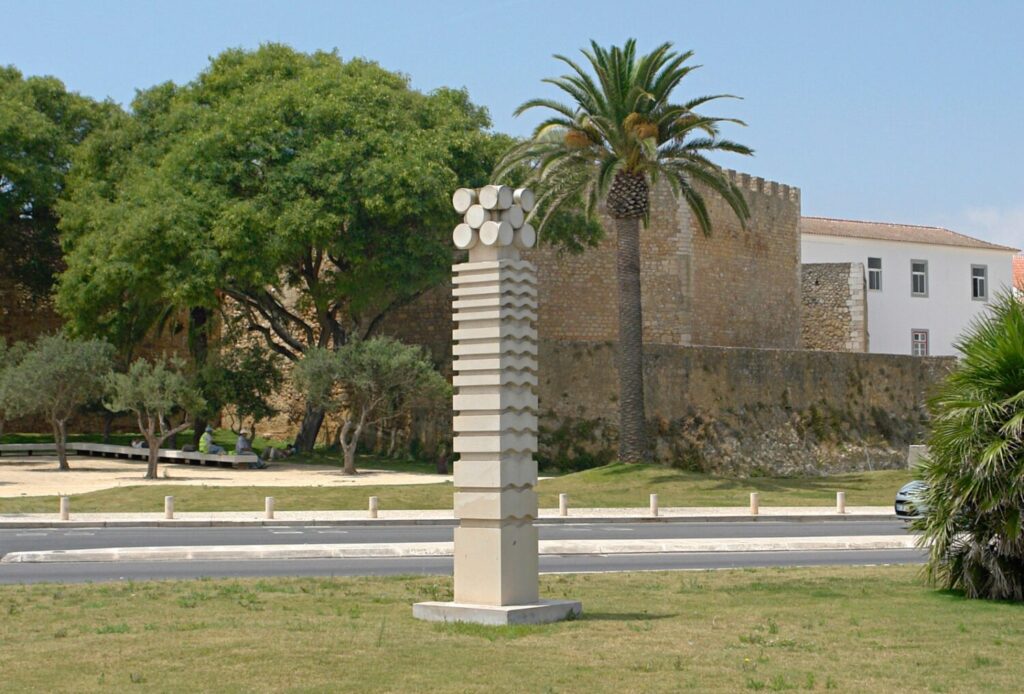
One striking landmark highlighting this history is ‘Rotunda dos Navegadores Lacobrigenses’ (Roundabout of the Lagos Navigators). Created by artist Xana (Alexandre Barata) in 1997, the sculpture is a tribute to the Portuguese led by Prince Henry the Navigator in the 15th century.
The artwork’s dynamic form allows for different interpretations depending on the angle from which it’s viewed. Its spiral design represents the rhythm of the sea, the momentum of exploration, and the continuous movement of discovery. It’s a reminder of Lagos’ role in the great maritime journeys that shaped world history.
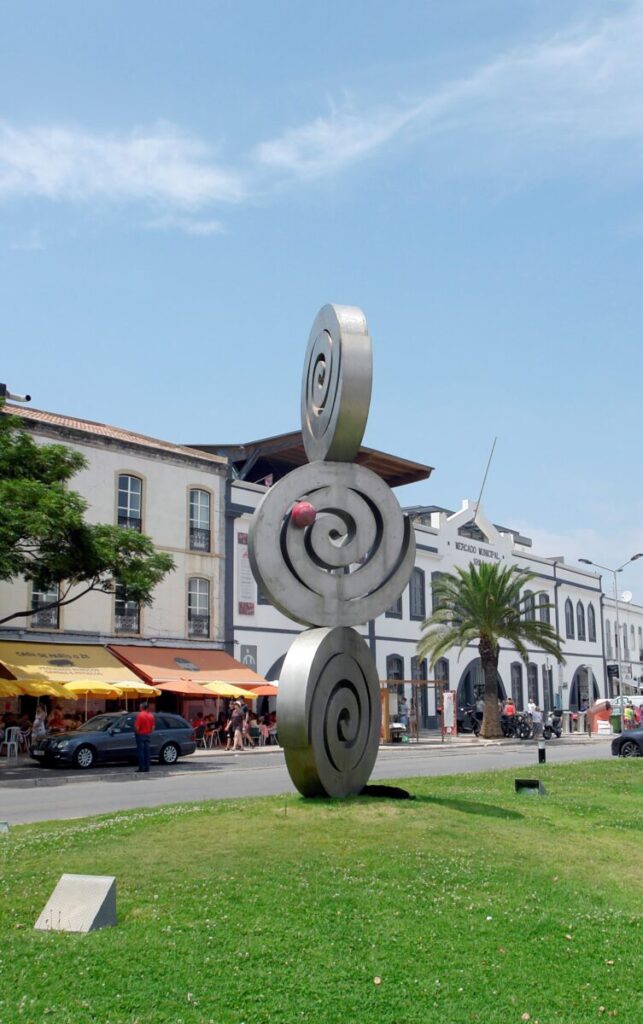
Another landmark honouring Lagos’ legacy, on the road to Meia Praia, is ‘Rosa dos Ventos’ (Wind Rose) by sculptor Sören Ernst, designed and directed by António Fernandes. Inaugurated in 1998, the monument captures the spirit of Portuguese maritime discoveries, with a compass-inspired design symbolising exploration.
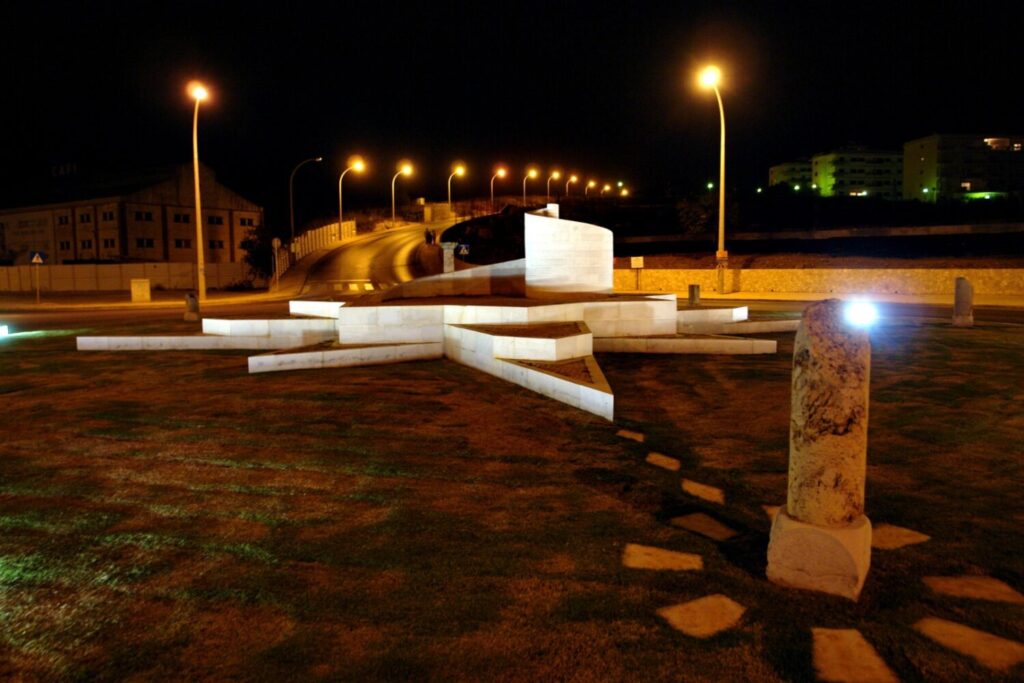
“The design of the compass represents the Portuguese exploration of the seas in all directions beyond the formerly known boundaries of the medieval world,” Ernst describes.
“The columns surrounding it stand for the architectural and cultural canon of Europe at the time, and the centrepiece is a representation of a golden-ratio spiral, a deep-rooted symbol of growth and self-perpetuation.” The ascending spiral, he explains, is setting the course to the discovery of unknown lands.
For the municipality, these public artworks are part of a larger vision to elevate and beautify Lagos’ urban spaces. “The works scattered around the city allow us to revisit the history of Public Art in Portugal, from 1960 to the present day, and to understand its evolution,” says Mayor Hugo Pereira.
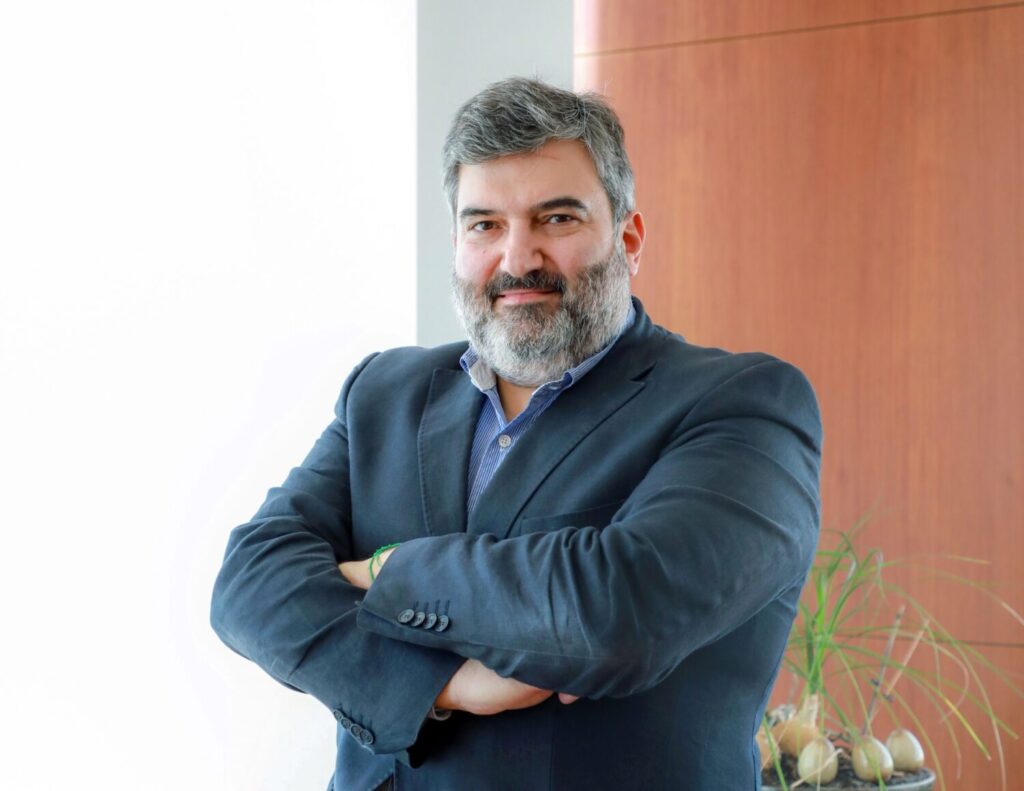
The impact of these sculptures extends beyond aesthetics. Many commemorate key historical figures and events, such as the statue of D. Sebastião (King Sebastian), a mythical figure in Portugal, by João Cutileiro.
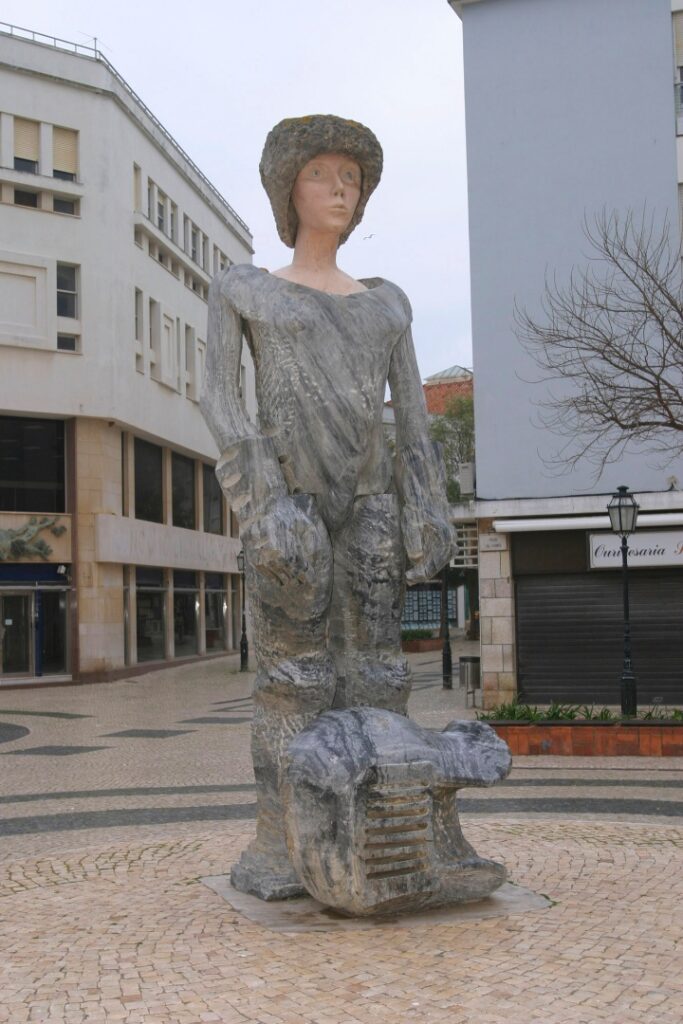
Installed in 1973 on a former roundabout, the monument challenges conventional statuary norms, breaking away from the dominant artistic language of the Estado Novo regime and has become an iconic reference in Lagos.
For residents and visitors alike, these roundabouts have become defining features of the city. They provide a sense of identity, linking Lagos’ past with its present.

“The feedback we regularly receive leads us to believe that investing in these initiatives was the right choice, allowing us to put Lagos on the map of Public Art and Urban Art, and therefore deserves to be valued and continued,” says Hugo Pereira.
Looking ahead, the mayor assures that the municipality plans to continue investing in in public art at key entry points, ensuring that visitors are greeted with a visual and cultural impact as soon as they arrive.
A study is already underway to assess new locations, focusing on structural feasibility and artistic potential. The goal, as Hugo Pereira states, is “to maintain the level that Lagos has already become accustomed to in terms of art in public spaces, to add novelty and to consolidate the notoriety of the territory”.
Follow Inside Algarve Magazine on Instagram and Facebook for more news!
Read also:



